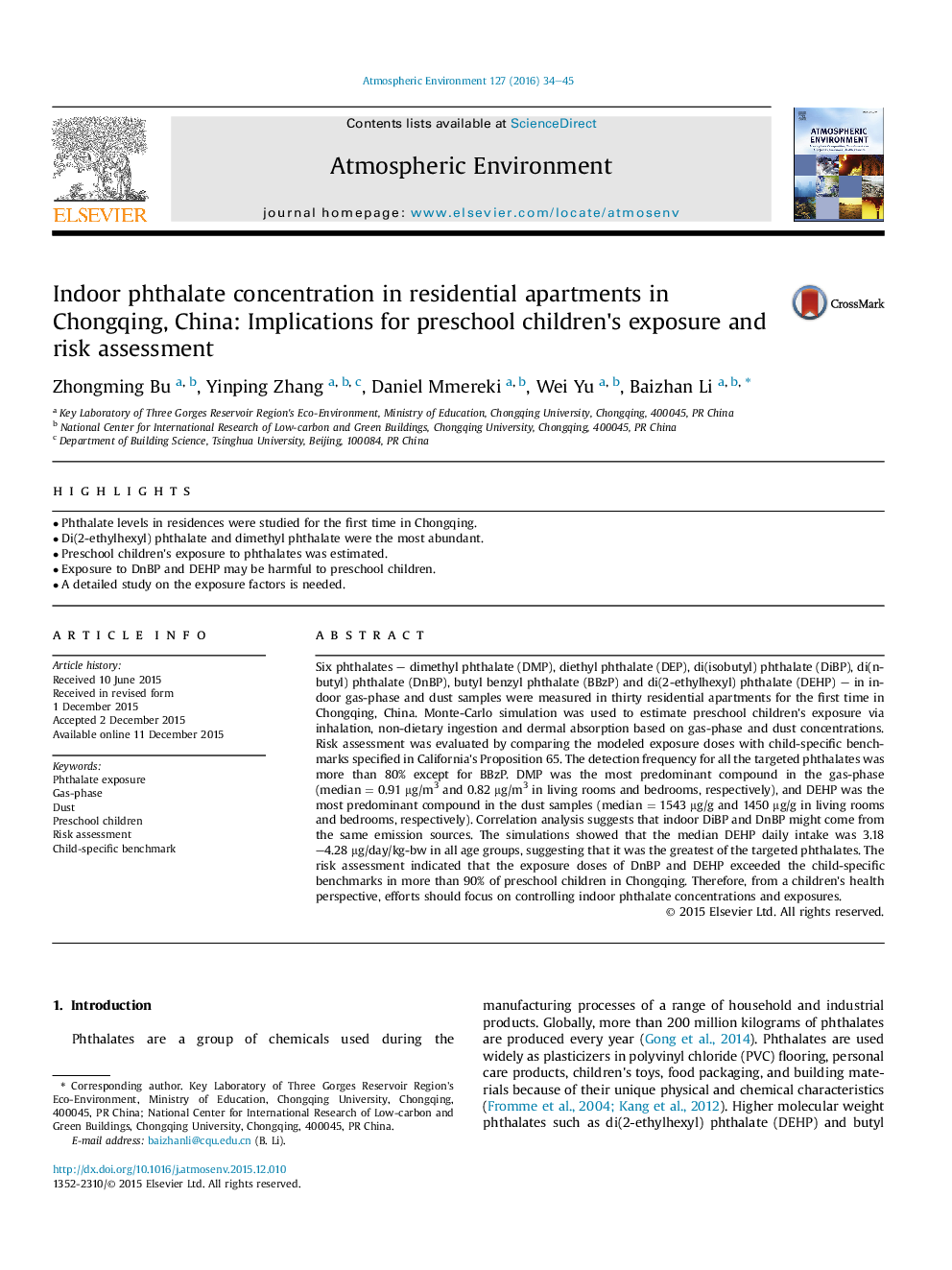| Article ID | Journal | Published Year | Pages | File Type |
|---|---|---|---|---|
| 6336858 | Atmospheric Environment | 2016 | 12 Pages |
â¢Phthalate levels in residences were studied for the first time in Chongqing.â¢Di(2-ethylhexyl) phthalate and dimethyl phthalate were the most abundant.â¢Preschool children's exposure to phthalates was estimated.â¢Exposure to DnBP and DEHP may be harmful to preschool children.â¢A detailed study on the exposure factors is needed.
Six phthalates - dimethyl phthalate (DMP), diethyl phthalate (DEP), di(isobutyl) phthalate (DiBP), di(n-butyl) phthalate (DnBP), butyl benzyl phthalate (BBzP) and di(2-ethylhexyl) phthalate (DEHP) - in indoor gas-phase and dust samples were measured in thirty residential apartments for the first time in Chongqing, China. Monte-Carlo simulation was used to estimate preschool children's exposure via inhalation, non-dietary ingestion and dermal absorption based on gas-phase and dust concentrations. Risk assessment was evaluated by comparing the modeled exposure doses with child-specific benchmarks specified in California's Proposition 65. The detection frequency for all the targeted phthalates was more than 80% except for BBzP. DMP was the most predominant compound in the gas-phase (median = 0.91 μg/m3 and 0.82 μg/m3 in living rooms and bedrooms, respectively), and DEHP was the most predominant compound in the dust samples (median = 1543 μg/g and 1450 μg/g in living rooms and bedrooms, respectively). Correlation analysis suggests that indoor DiBP and DnBP might come from the same emission sources. The simulations showed that the median DEHP daily intake was 3.18-4.28 μg/day/kg-bw in all age groups, suggesting that it was the greatest of the targeted phthalates. The risk assessment indicated that the exposure doses of DnBP and DEHP exceeded the child-specific benchmarks in more than 90% of preschool children in Chongqing. Therefore, from a children's health perspective, efforts should focus on controlling indoor phthalate concentrations and exposures.
